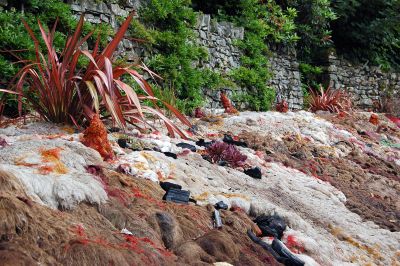Mulching with Wool
As with other mulch we use in the garden, sheep’s wool retains moisture and stops weeds from spouting. In the case of using sheep’s wool for mulch, it can also retain more heat during cold winters. This keeps roots warmer and can help keep crops alive past their normal growing point. Online info says mulching with wool in the vegetable garden can “increase production and plant viability against pest damage.” Wool matts purchased commercially or woven together from available wool, last approximately two years.
How to Use Wool in the Garden
Wool matts for mulch may need to be cut before placement. Use a pair of heavy-duty shears to cut them into appropriately sized strips. When using wool matts for mulch, the plant should not be covered. Placement of the matts should allow for space around the plant where it may be watered or fed with liquid fertilizer. Liquids may also be poured directly onto the wool and allowed to seep through more slowly. If using pelleted or granular fertilizer, apply this into the bed before placing wool matts for mulch. If top dressing with a layer of compost, this should also be applied prior to placement of the matts. Since the matts are commonly staked to remain in place, it is difficult to remove them and could damage plants nearby. Therefore, it’s often recommended that you cut holes in the matts and plant through them when necessary. Some gardeners have also used actual pelts as mulch, and raw wool clippings from them, but as those are not readily available, we have only covered using the wool matts here.
